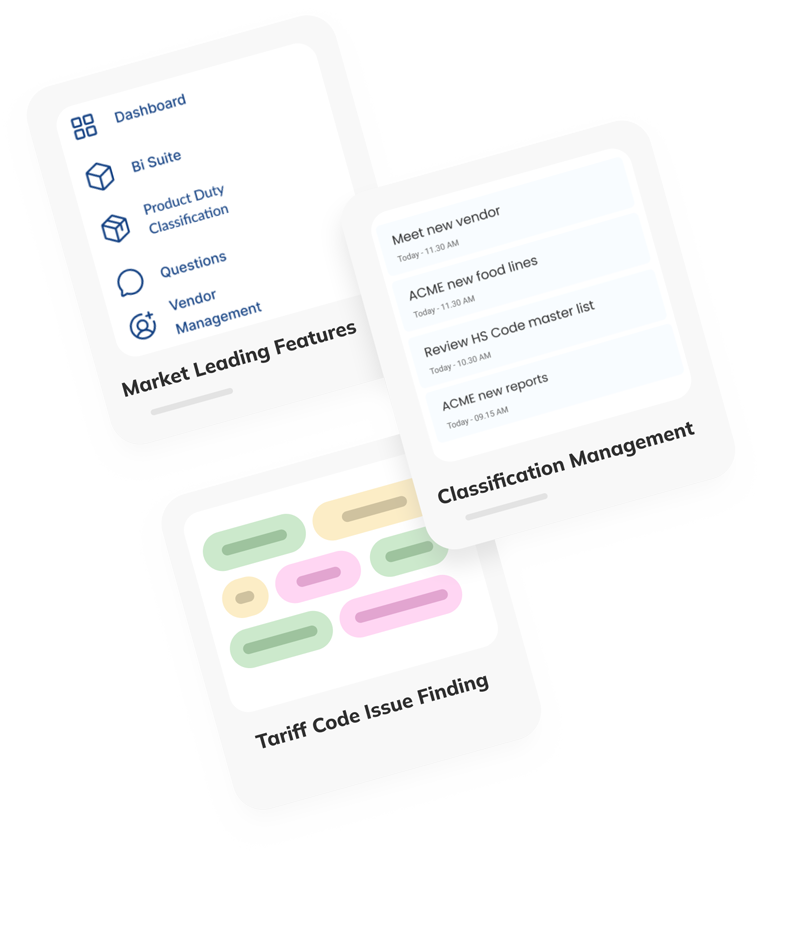Incorrect tariff codes are draining your bottom line
Getting tariff codes right is the fastest way to boost margins Every year, businesses quietly haemorrhage pro...
What do you need help with?
If you’re new to TariffTel, or looking for general support on customs classification, these commonly asked questions will help you to learn more about the process and how TariffTel can help.
Developed by the World Customs Organisation (WCO), the Harmonised System is an international product nomenclature, comprising of 21 sections, 97 chapters and over 5000 commodity groups covering most goods in international trade.
It contains the rules of customs classification, section, chapter and explanatory notes in a logical structure that aids the classification of imports into more than 200 countries around the world.
The WCO will normally update the nomenclature every 5 years and will add and remove codes as well as publish amendments to existing text. The last HS publication happened in 2022 and will likely be reviewed again in 2027.
An HS code is short for Harmonised System (HS) and is at least a 6 digit number that is used by customs to classify a product being shipped. It determines the correct duty and taxes that must be paid. Its structure is based on the chapter number, heading and subheading codes of the HS nomenclature.
It is required for every commodity that is shipped across international borders. No code, or the wrong code, will mean the shipment is delayed at customs and/or the receiver pays the wrong tax – non-compliance results in a penalty.
All countries using the HS will publish their own tariffs using this universal code.
A tariff code, sometimes referred to a commodity code, is a code published by each individual country or group of countries. It is comprised of the 6-digit HS code and may have an extension to the code comprising of usually between an additional 2 to 6 digits, depending on the country.
The additional digits permit each country to set duty rates and taxes for a greater range of products, monitor controlled goods and collect import statistics.
Countries may have several different duty rates for imports of the same type of goods or commodity, as well as a standard duty rate of tax. Trade agreements between the importing and exporting countries may remove or reduce the amount of duty payable. If there is no trade agreement between the importing and exporting countries, then duty would be based on the most favoured nation (MFN) rate providing both are members of the World Trade Organisation (WTO).
Import duty may be payable on your imports and, depending on the importing country, be based on the CIF or FOB value.
If import duty is based on the CIF value, the method most commonly used, you would need to include the cost of the goods, the freight cost and the cost of insurance to arrive at a dutiable value to calculate your import duty and taxes.
Discover the transformative capabilities of TariffTel for yourself when you gain absolute visibility and control of your classification process.

Getting tariff codes right is the fastest way to boost margins Every year, businesses quietly haemorrhage pro...
Helping high-risk industries avoid expensive errors If your business imports goods - whether electronic compo...
In today's complex trade environment, accurate product classification is more critical than ever for food and drink manu...